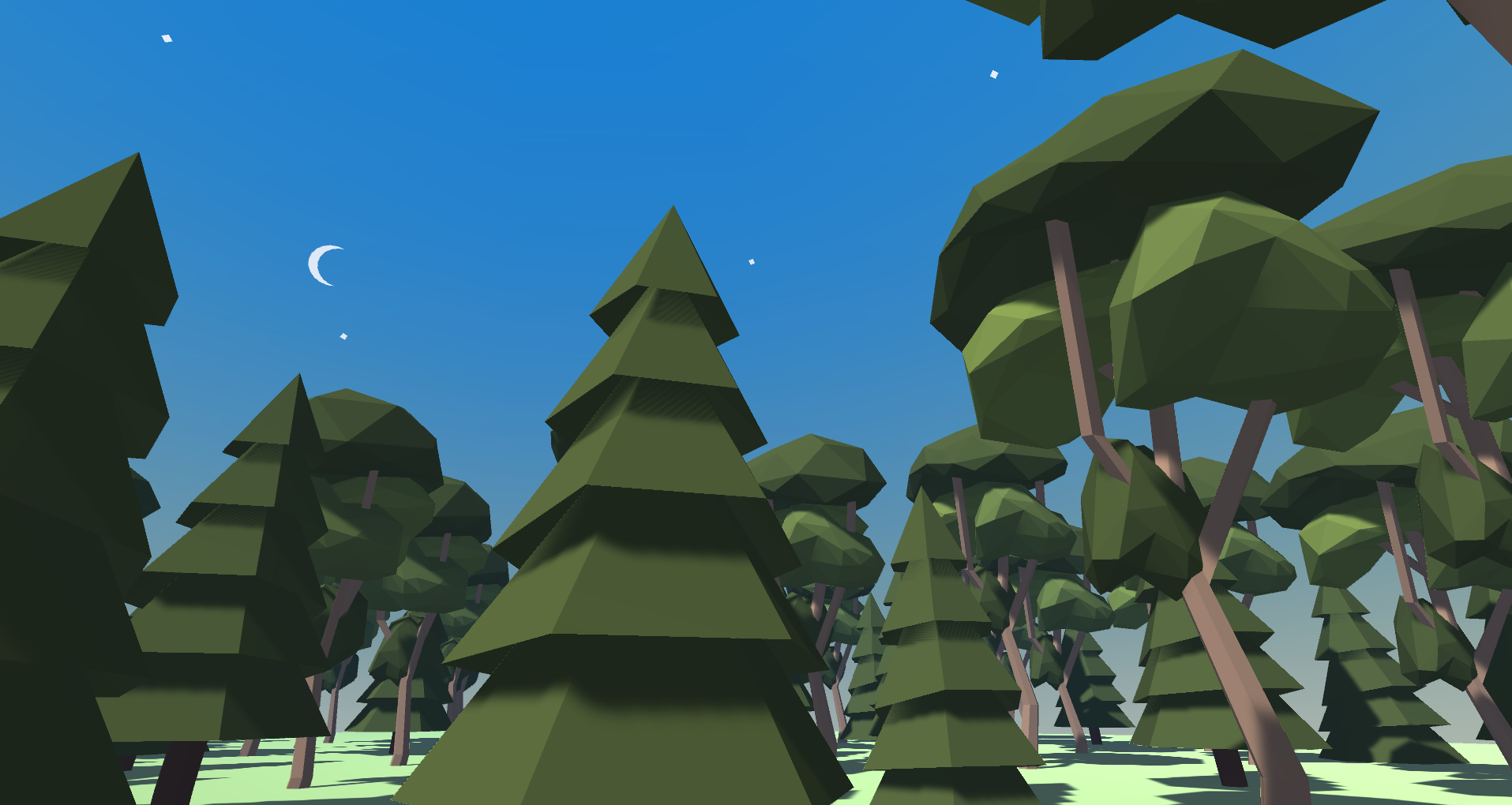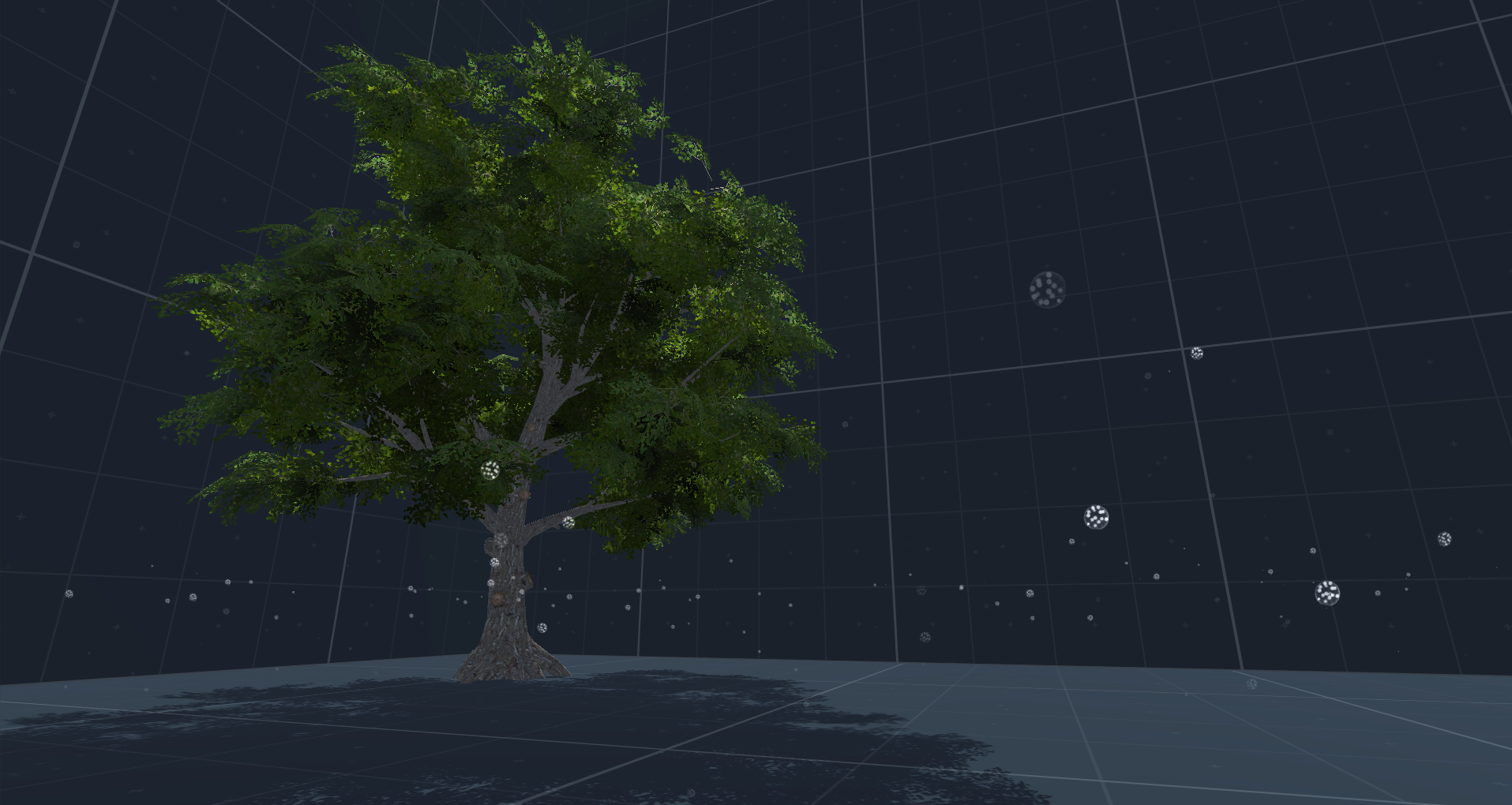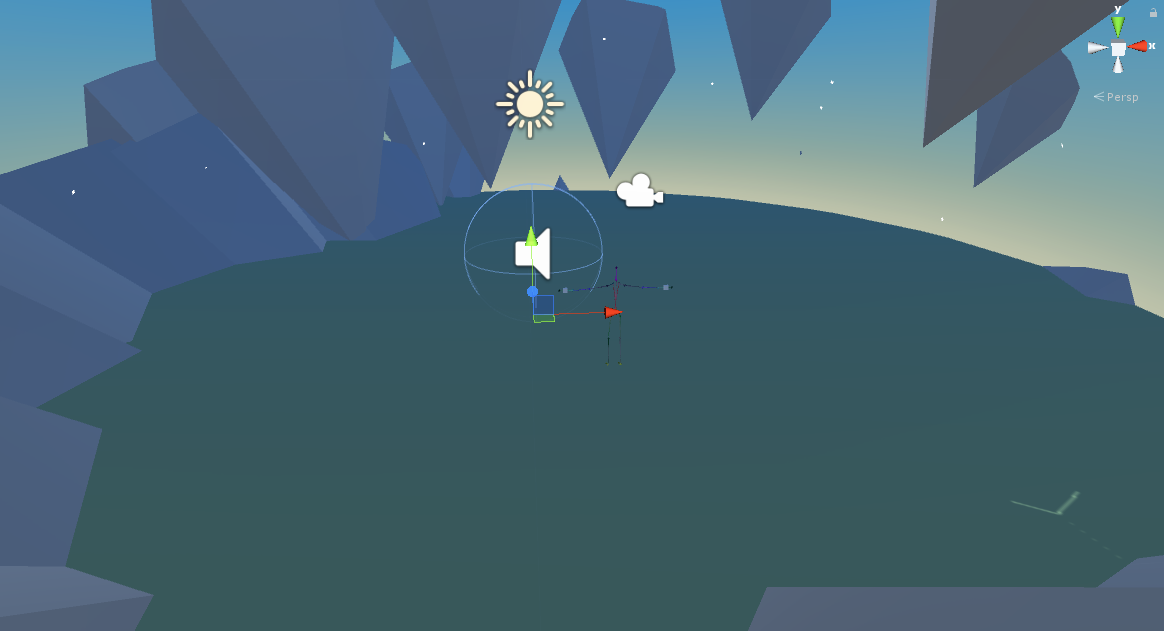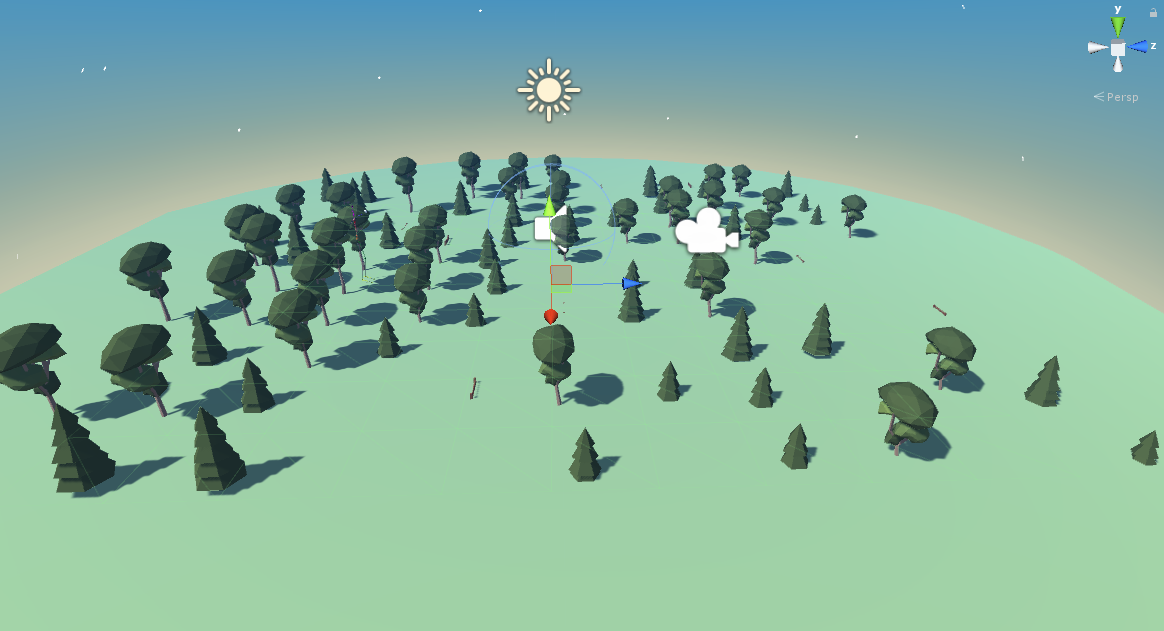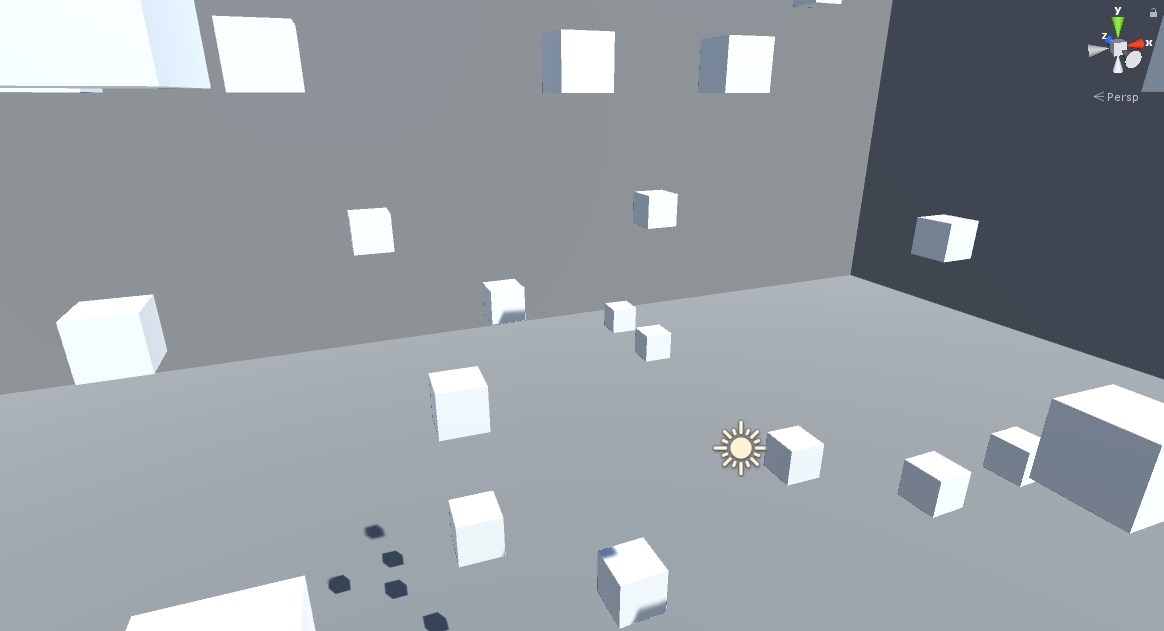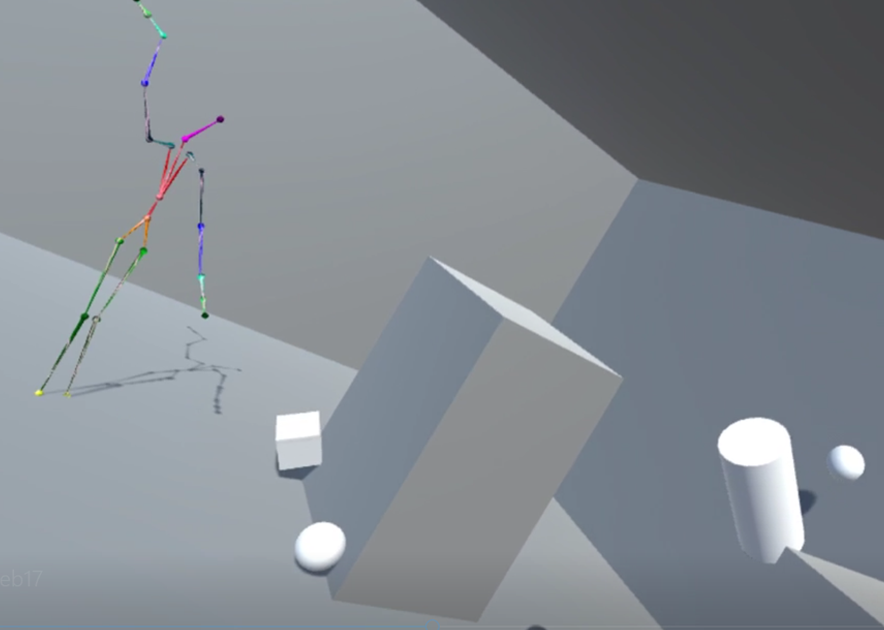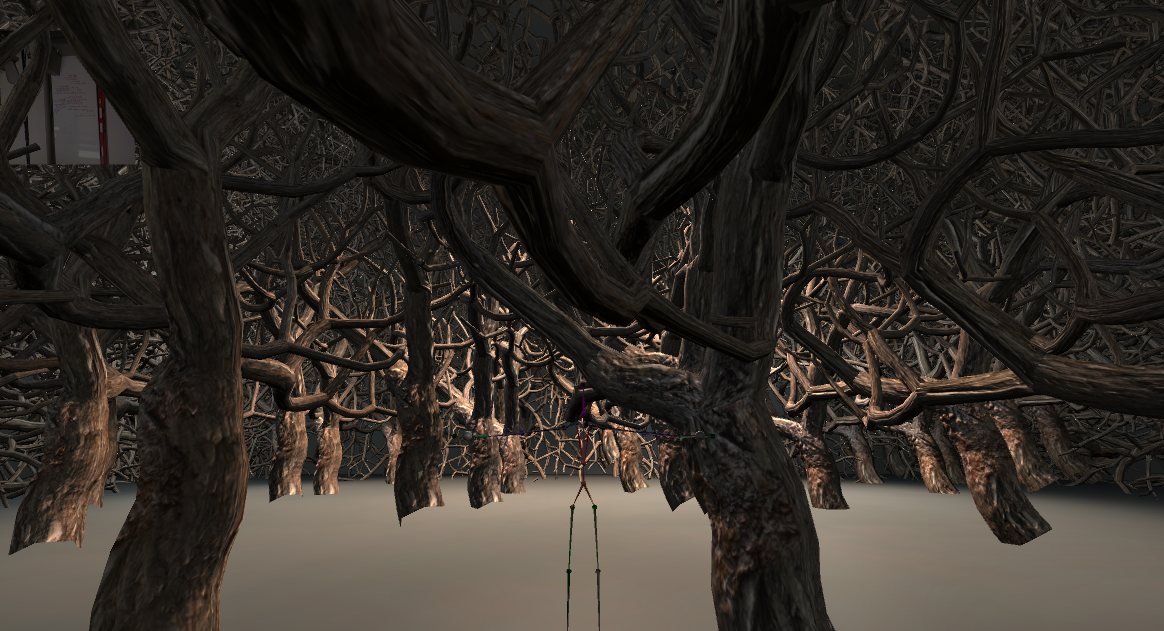Alice Grishchenko, MFA student in design and a key collaborator on the Humane Technologies team writes:
I loved making Birdbot. It is a virtual world that encourages certain motions, it isn't really a VR game, sometimes we call it a toy. It was a non-linear process to create it. Norah calls that emergent. We started from a place of abstract interactions, prototypes and a jumble of 3D models and textures pulled from many different sources and somehow we ended with a surreal 3 part experience, of which the most visible linking themes are birds and shadows. Personally, I started with some questions like:
- What is achievable with this cross section of technology?
- Which types of movement are engaging?
- Which environmental designs encourage engaging movements and provide discernible and satisfying feedback to the user?
Each of these questions is actually a cascade of many other questions that should ultimately be answered by players interacting with the system, but before having those answers you have to create a system by anticipating them. Hypothetical answers are tricky, so I started with some low investment prototypes that looked like this:
The goal was to get the player moving in a fun way by creating an interactive environment. I tested many interactions with physics simulations, flying, floating, and rhythmic movement. I would run these by Norah and we'd talk about the intention compared to the feeling of the environment, and repeat this playtesting process with other collaborators to see what perspectives they could bring. Through this process we created three different interactive environments, then connected them with visual transitions and common themes. Slowly we started to solidify which features we wanted to develop in each scene. The three stages became surreal, calm spaces with strange gravitational properties and shadowy avatars that represent otherness. The levels remain separate in the mechanics of their interactions, balancing, reaching out for virtual contact and flapping arms in a way that imitates flight.
We connected the three levels in a way that creates the experience of moving from an enclosed space, upwards to a vast open space and then forwards into a tunnel that leads back to the beginning of the experience. The content of the levels changes dramatically once the player ascends to the open space. This is because we enlisted the help of Maria Palazzi's class to create compassionate landscapes for the player to soar over. The class's work is combined to generate a procedural world that changes over time. Collaborating with an entire class of people for a week was a really unique experience for me, and Maria's class delivered some great insights and beautiful assets to the work that made it much richer. I worked with Skylar Wurster to develop the spherical procedural landscapes and we used some custom shaders to fade between ground and (sideways) sky textures.
A compassionate landscape/interpretation of how birds may view an urban environment
All these changes between the three levels and all their components provide players with many unusual experiences and sensations one after another. I think the piece really leads the player to think about identity and the journey of connection they just experienced.



